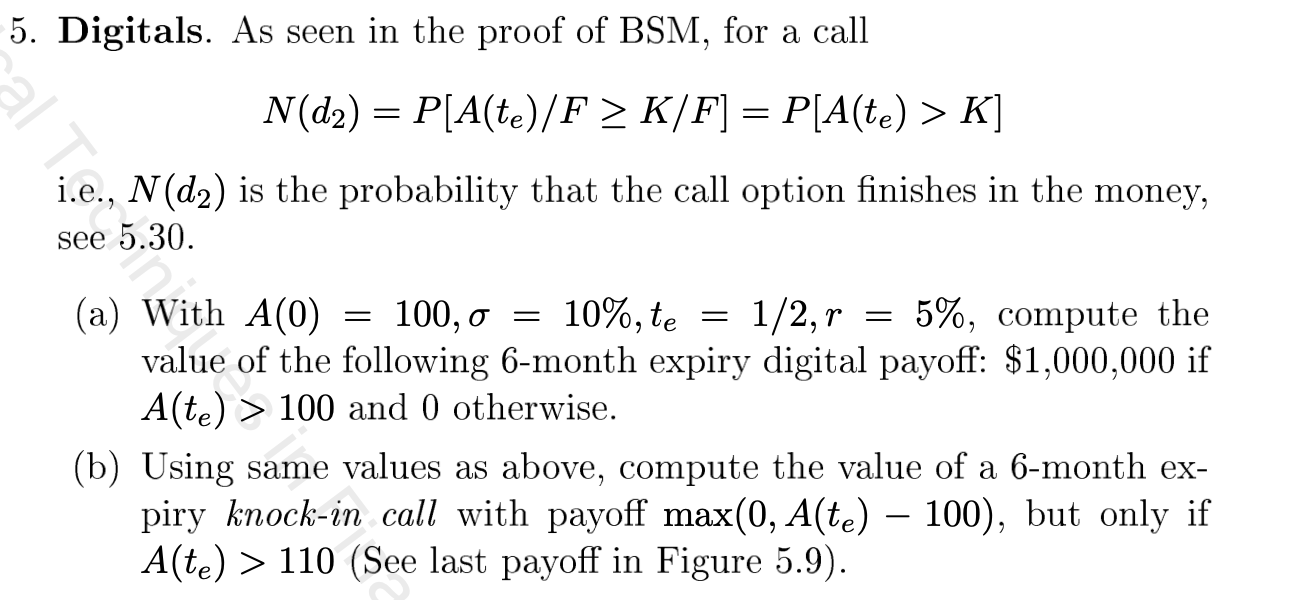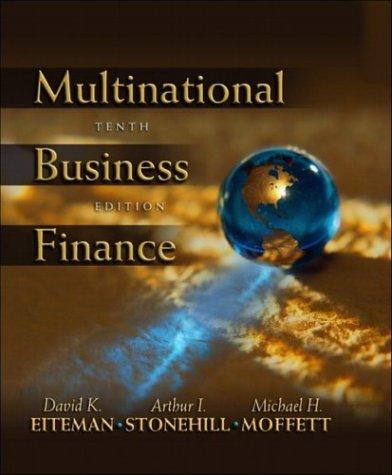Answered step by step
Verified Expert Solution
Question
1 Approved Answer
5. Digitals. As seen in the proof of BSM, for a call N(d2) = P[A(te)/F > K/F] = P[A(te) > K] i.e., N(d2) is the

Step by Step Solution
There are 3 Steps involved in it
Step: 1

Get Instant Access to Expert-Tailored Solutions
See step-by-step solutions with expert insights and AI powered tools for academic success
Step: 2

Step: 3

Ace Your Homework with AI
Get the answers you need in no time with our AI-driven, step-by-step assistance
Get Started


